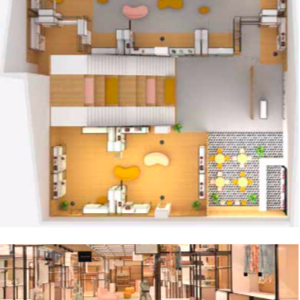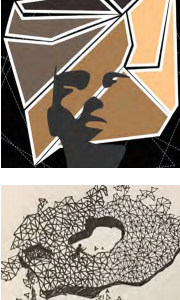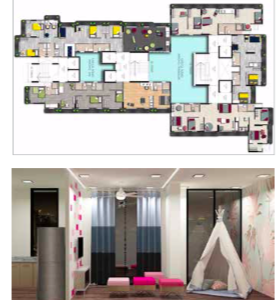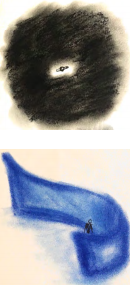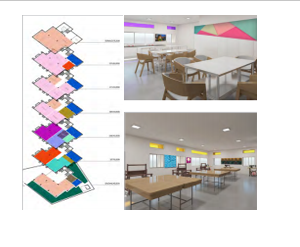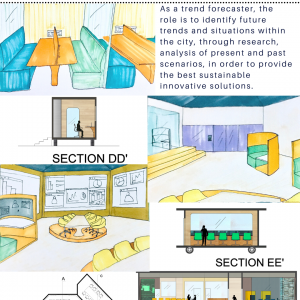The Elements and Principles of Interior Design
Creating a beautiful home isn’t difficult if you know the elements and principles of interior design. These help designers transform any place into a masterpiece. They’re responsible for giving structure to architects and designers to create beautiful spaces.
Whether it’s a bathroom, a kitchen, or a bedroom – interior designers use these elements to craft stylish and functional interiors. What are these elements of interior design? We’ve answered this question in this article.
The 7 Elements and Principles of Interior Design
1. Space
The space of a room refers to the physical boundaries set by its four walls. Interior designers work with the length, width, and height of a room to create a functional and well-designed space. There are two kinds of space to take into consideration: two-dimensional and three-dimensional.
- Two-dimensional space includes the floor, along with the length and breadth of the room. This is considered when adding carpets and rugs. Three-dimensional space considers the length, breadth, and height of an area. It’s used when choosing shelving and furniture.
- Another aspect of space is positive and negative space. Positive space contains objects and negative space includes an area that’s devoid of objects. Negative space also includes the space between different objects. How space is used depends on the chosen design of a room. A minimalist design will use more negative space than an eclectic one.
An interior designer will have to carefully strike a balance between both negative and positive spaces in the room. Doing so helps designers create visual illusions to make the room look larger, wider, or higher than it is. Failing to do so can create an overcrowded sensation.
While every client’s needs are different, this element helps designers choose the size and scale of the furniture and objects to be placed in the room. An example of this element of interior design is a tall bookcase that gives the illusion of height in a room.
2. Lines
Lines create visual guidance in a space and help create definition. They’re divided into three categories: horizontal, vertical, and dynamic. Interior designers use a combination of all three for the best results.
- Horizontal lines are from side-to-side and create a feeling of security, stability, and efficiency. Designers use horizontal lines to make rooms look longer and wider.
They also draw the eye towards a focal point. Interior designers create these with chairs, tables, beds, and other surfaces. Overusing horizontal lines makes a room look boring and dull.
- Vertical lines are up-and-down and are considered bold and expressive. They can create feelings of strength and freedom. Highlighting vertical lines makes a room look taller. These are mostly used in dining rooms and offices, using doorways and windows. If used unwisely, they can leave the viewer feeling uneasy.
- Dynamic lines refer to zigzag, curved, or diagonal lines. When used correctly, they add fun and drama to a room. These can be found in staircase structures, and more. These are visually stimulating and attention-grabbing. Too many of these can be overpowering and distracting.
3. Forms
Essentially, any three-dimension object is a form. These are created by combining multiple shapes. The types of the form include geometric and natural. Geometrical forms have hard lines and square edges. They look artificially made.
Natural forms look like they’ve been created organically and they evoke a feeling of nature. These are irregular and have curvy shapes. Forms can either be open (objects that one can look into) or closed (self-contained).
Adding similar forms creates harmony and balance in a room, but putting together too many creates mayhem. Normally, designers repeat dominant forms throughout the room.
4. Patterns
This element is the deliberate repetition of lines, forms, or other design elements. These are popularly used on wallpaper and fabrics but can be used anywhere. Patterns add life and motion to space – they tell a story.
Patterns also add continuity and help transition space’s overall design. They come in several types, such as animal prints, florals, pictorial, geometric, and stripes.
Complex patterns can use contrasting colors and other elements to create interesting effects. The choice of patterns is also dependent on the style of the room – whether it’s contemporary, traditional, gothic, etc. But, too much pattern clashes and looks chaotic.
As a general rule, designers usually use a maximum of three patterns – all from the same color palette.
5. Light
The element of lighting is essential to make a room look bright and inviting. Whether the source is natural or manmade doesn’t matter. Many designers use a combination of both to enhance the other elements.
That being said, artificial lighting is the most common in interior design. Many factors govern light, such as its color, intensity, and whether you can adjust its brightness.
Designers group light into three major types – task, accent, and mood. Task lighting is used for a well-defined purpose – it includes light sources like tables and bed lamps. Accent lighting is more decorative and is used to highlight artwork, structures, and more.
Mood lighting is also called ambient light – used to create a certain mood or environment in the room.
6. Colours
This element is a vast topic in itself. Colors are represented on the Colour Wheel. Here, the primary colors are defined, along with the secondary and tertiary. Using this, designers learn which groups of colors are complementary, analogous, and monochromatic.
Each color on this wheel has three important characteristics. They’re called hue, value, and intensity. Experts use these in different combinations and permutations to create the desired effect.
Colors have three functions – aesthetic, emotional, and functional.
- Aesthetically speaking, colors are used to make a room or space look fresh and beautiful. Combining colors with the right lighting can create a wonderful effect.
- Using colors the right way also can create moods and change perceptions of a room. A lot of research has been done on how different colors impact our moods.
- Designers take great care to use the right color combinations in the appropriate rooms. For example, relaxing greens and blues are better suited to bedrooms. Red is more suited for kitchens as it induces hunger.
- In practical terms, light colors can be intelligently used to make a room look larger and more spacious. Dark colors are used to add a powerful accent in a large space.
Interior designers use a combination of colors to create beautiful and alluring designs.
7. Texture
Texture refers to the way an object feels when touched. This includes an object’s visual texture or its actual texture. The visual texture is the sense of textile sensation it evokes when looked at.
Texture plays an important role in flooring, furniture, fabric, and others. It’s used to create a sense of depth, interest, detail, and make an object visually pleasing. Using texture can add contrast and emphasis to a finished design.
Has learning the elements of interior design piqued your interest in this fascinating field? If so, go deeper into these elements of interior designing – and more – from the best institute for interior designing in Mumbai.
ISDI – School of Design and Innovation, Mumbai offers a 4 year UG Program in Interior Design. It has been established in curricular collaboration with the prestigious Parsons School of Design, New York. They teach students to conceptualize and develop interior designs so that they will be able to transform physical spaces into functional and comfortable habitats.
Kick-start your interior designing career from one of the best institutes for interior designing in Mumbai!



